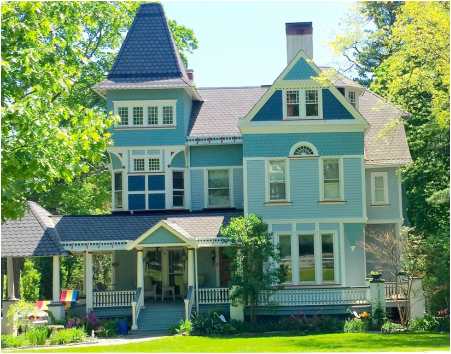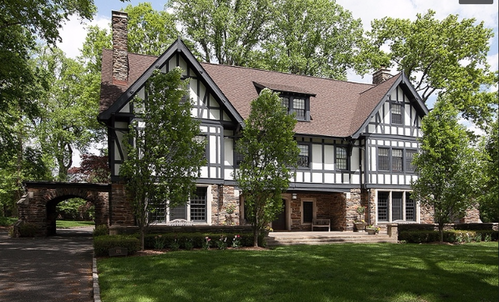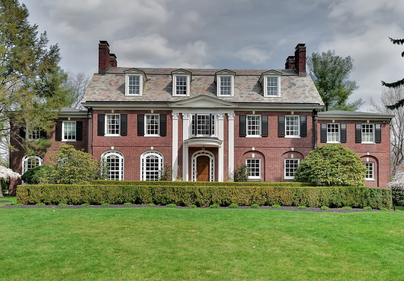Safeguarding a Rich History
Montclair is uniquely rich in history and historic architecture going as far back as the 1600s. In the middle and later 1800s, Montclair grew from a pastoral haven to an early commuter town and then to become known as one of the most attractive suburbs in the country after the railroads first arrived in 1856. It attracted many prominent New York City citizens including notable leaders in education and religion, social reform, science and medicine, influential businessmen as well as a large artist colony...all seeking the clean air of First Mountain and its rural setting. Renowned architects designed elegant homes in a variety of styles. While other historic towns may boast of one or two influential or famous residents, by the 1930s, more than 130 Montclair residents were listed in WHOSE WHO IN AMERICA. Here is a synopsis of Montclair's history and a resource about prominent locals through history.
Today's wealth of historic homes and buildings still attracts residents, visitors and businesses. It benefits us all to protect this exceptional heritage. Without preserving these significant homes and village-like business districts, Montclair cannot continue to attract the same homeowners needed to support our town resources: the wide variety of shops, a respected school system, cultural institutions and diverse entertainment. Church Street has maintained its historic integrity and it is one of the most vibrant and popular streets in town. Here is an interactive map of Montclair's historic assets.
At a more personal level, property values are closely linked to its location, neighborhood quality and adjacent homes. The integrity of historic features of your property, seen from the street, maintains value of your neighborhood as well as your individual home.
Montclair is uniquely rich in history and historic architecture going as far back as the 1600s. In the middle and later 1800s, Montclair grew from a pastoral haven to an early commuter town and then to become known as one of the most attractive suburbs in the country after the railroads first arrived in 1856. It attracted many prominent New York City citizens including notable leaders in education and religion, social reform, science and medicine, influential businessmen as well as a large artist colony...all seeking the clean air of First Mountain and its rural setting. Renowned architects designed elegant homes in a variety of styles. While other historic towns may boast of one or two influential or famous residents, by the 1930s, more than 130 Montclair residents were listed in WHOSE WHO IN AMERICA. Here is a synopsis of Montclair's history and a resource about prominent locals through history.
Today's wealth of historic homes and buildings still attracts residents, visitors and businesses. It benefits us all to protect this exceptional heritage. Without preserving these significant homes and village-like business districts, Montclair cannot continue to attract the same homeowners needed to support our town resources: the wide variety of shops, a respected school system, cultural institutions and diverse entertainment. Church Street has maintained its historic integrity and it is one of the most vibrant and popular streets in town. Here is an interactive map of Montclair's historic assets.
At a more personal level, property values are closely linked to its location, neighborhood quality and adjacent homes. The integrity of historic features of your property, seen from the street, maintains value of your neighborhood as well as your individual home.

Preservation as a Public Good
The National Historic Preservation Act of 1966 was developed to protect significant historical and architectural sites. This Act states:
For the benefit of all citizens, historic preservation laws override individual property rights, as do laws that set aside the park lands for public enjoyment. Historic designation provides for guidelines for preserving historic areas, to safeguard significant buildings from demolition. Glen Ridge has had excellent success with its own town Historic Preservation Commission by designating large residential areas as historic to protect property values and prevent neighborhood deterioration. Montclair needs to follow their lead and demonstrate a commitment to protect this irreplaceable architecture.
Local Neighborhoods
Montclair's Historic Preservation Commission, or HPC, works to preserve the heritage by guiding property owners in maintaining the exterior historic character as that which attracts homeowners to Montclair's neighborhoods.
The HPC seeks historic designations to protect our special properties. These designations are an important tool for preserving buildings that are architecturally significant or have a notable connection to historic events or people. Local landmark designation of a home provides that the HPC can help owners find exterior alternations that are compatible with a building's historic character, if they can be seen by the general public. It also prevents demolition of landmarked properties unless the owner conducts a 12-month search for a buyer who will preserve the historic building and continue to use it.
For more information and guidelines are at the HPC page here on the town website. HPC meetings are open to the public and meet in the Municipal Building, 205 Claremont Avenue. HPC meetings generally held on the last Thursday of each month but meeting dates are posted on the website. Public questions and comments are welcome.
The National Historic Preservation Act of 1966 was developed to protect significant historical and architectural sites. This Act states:
- The preservation of this irreplaceable heritage is in the public interest so that its vital legacy of cultural, educational, aesthetic, inspirational, economic, and energy benefits will be maintained and enriched for future generations of Americans.
- In the face of ever-increasing extensions of urban centers, highways, and residential, commercial, and industrial developments, the present governmental and nongovernmental historic preservation programs and activities are inadequate to insure future generations a genuine opportunity to appreciate and enjoy the rich heritage of our Nation.
For the benefit of all citizens, historic preservation laws override individual property rights, as do laws that set aside the park lands for public enjoyment. Historic designation provides for guidelines for preserving historic areas, to safeguard significant buildings from demolition. Glen Ridge has had excellent success with its own town Historic Preservation Commission by designating large residential areas as historic to protect property values and prevent neighborhood deterioration. Montclair needs to follow their lead and demonstrate a commitment to protect this irreplaceable architecture.
Local Neighborhoods
Montclair's Historic Preservation Commission, or HPC, works to preserve the heritage by guiding property owners in maintaining the exterior historic character as that which attracts homeowners to Montclair's neighborhoods.
The HPC seeks historic designations to protect our special properties. These designations are an important tool for preserving buildings that are architecturally significant or have a notable connection to historic events or people. Local landmark designation of a home provides that the HPC can help owners find exterior alternations that are compatible with a building's historic character, if they can be seen by the general public. It also prevents demolition of landmarked properties unless the owner conducts a 12-month search for a buyer who will preserve the historic building and continue to use it.
For more information and guidelines are at the HPC page here on the town website. HPC meetings are open to the public and meet in the Municipal Building, 205 Claremont Avenue. HPC meetings generally held on the last Thursday of each month but meeting dates are posted on the website. Public questions and comments are welcome.

